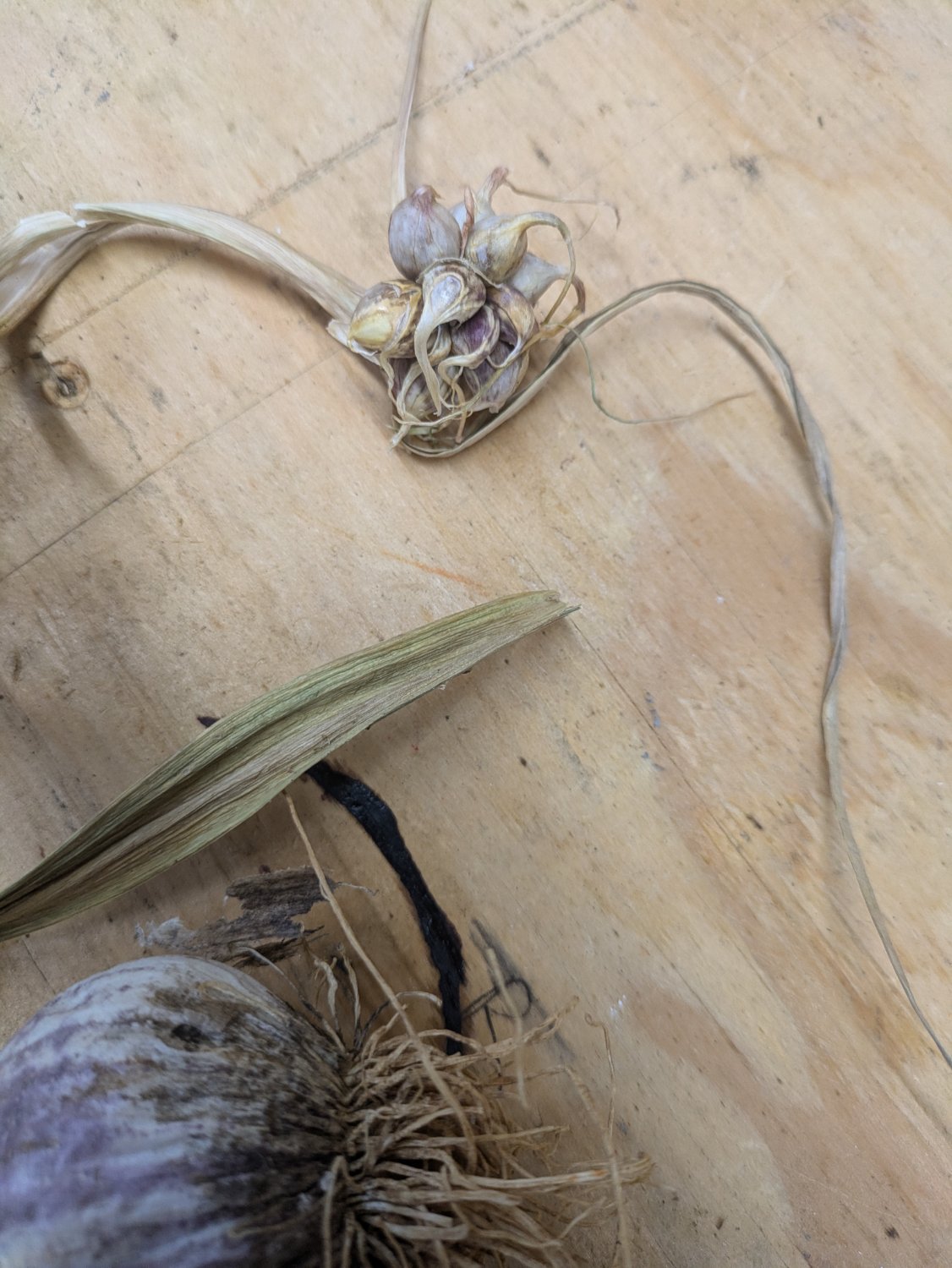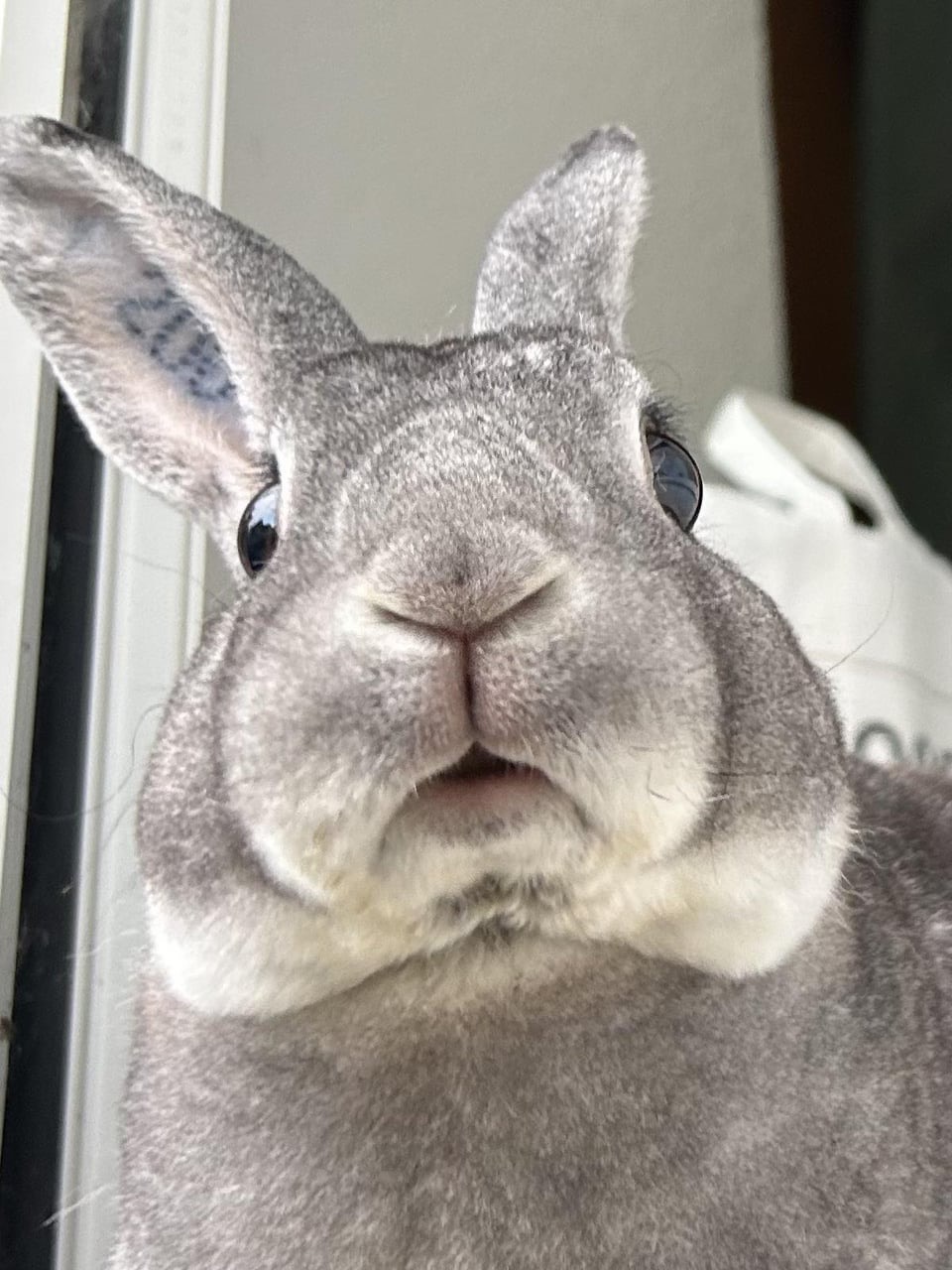[Image description: a perfectly round peeled bulb of garlic on a cutting board, with unpeeled normal cloves behind it.]
When the recipe calls for one clove of garlic.
Delicious compliance
That’s not done yet. Garlic looks like this when it hasn’t ‘split’ into the clove parts yet. This will be bland and only have a mild flavor.
That makes sense, he was really undersized compared to the rest.
He? uwu
Why are you getting your uwu all over the garlic?
Why are you not getting your uwu all over the garlic?
So some of the inner flesh toward the middle transforms into outer skin?
So you’ve got two modes of reproduction with Allium. Allium like this typically follows a biennial habit, so this years garlic will split into cloves around the fall, in preparation for sending up a flowering stalk next spring/ summer. The cloves are vegetative propagules; just another way to get more garlic other than seeds. Hence you can just plant a clove and get a garlic next year, or, you can plant seed and also get garlic.
Now for your actually question, I believe the segmentation is probably exogenous, technically yes, however, I am by no means an expert in Allium morphology (although I have done graduate coarse work in plant morph, and worked in a plant morph lab), so don’t quote me. However, it wouldn’t appear like you are describing. Think of the ring at the base of a clove of garlic as a bunch of ‘stems’. The branching would originate there.
How do I subscribe for more garlic facts?
Me too please
unsubscribe
Believe it or not, straight to jail.
Good for cooking as is?
bih that’s a onion
Here is another mildy interesting fact, in Swedish we group onions and garlic together by using the word “lök” with a color and different spacing to differentiate them:
“lök” - onion
“gul lök” - onion or yellow onion
“rödlök” - red onion
“vitlök” - garlic
We never talk about “vit lök”, it doesn’t really exist as a concept in Swedish, but we have more types of “lök”…
“gräslök” directly translates to “grass onion”, but the proper translation is “chives”
“prujolök” is the Swedish name for “leek”
Garlic, onions, chives, and leeks (plus shallots, spring onions / scallions, and ramsons) are actually very closely related, being part of the same allium genus. That’s the same level of closeness as dogs to wolves, for example
Very interesting, I did not know that!
Dogs and wolves are the same species (Canis Lupus), not just members of the same genus. Genus Allium is much bigger than genus Canis (over 800 species) and its members are much less closely related to each other. The common food species are at least evolutionary cousins though, unlike other parts of the category. The onions and chives all share subgenus Cepa, while garlic and leeks are off in subgenus Allium.
i love swedish. i drive an old volvo every day and frequently end up on weird SE-language forums as a result.
Funny, in Norwegian hvitløk is talked about a great deal.
Dows that refer to garlic?
Yes, hvitløk = vitlök in Swedish. It’s the same word really (the h is silent), and ø (Norwegian, Danish) = ö (Swedish, Finnish, German).
Ah, I think you missed the spacing when I said that “vit lök” wasn’t a thing in Swedish, “vitlök” is as you say “garlic”, and is a common word
Oh ok, I thought that was more a space for emphasis. That explains it then :-)
What about shallots?
That would be “schalottenlök”
rödlök*
Tack, gjorde kommentaren när jag var väligt trött
What’s the difference between “vitlök” and “vit lök”?
“vitlök” - garlic
“vit lök” - “white onion”
White onions does not exist.
We use white onions for Mexican food here in the US. I guess it’s obscure enough that they aren’t used in Europe. Not a huge taste difference between white and yellow onions.
Looks at his red onion cheese Quesadilla…
I thought it was Whateveronionyoualreadyhavecutinthefridge?
We never talk about “vit lök”, it doesn’t really exist as a concept in Swedish,
Do you mean to say there isn’t garlic in Sweden??
They mean there is no white onion.
As I said, garlic is called “vitlök”, not “vit lök”
“Vit lök” means “white onion”, and does not exist
Given what you wrote, my question makes sense. Not sure why I was downvoted for a reasonable question.
Because I just explained it and even noted the spacing difference between “vitlök” and “vit lök”
You didn’t explain it originally. You could have easily but you didn’t. Apologies for being curious. I do know that most Swedes aren’t jerks.
There’s a particular variety of Chinese garlic that grows as a singular bulb. It originates in the Yunnan province, I think. I remember my mother growing it back when I was a child. It’s really nice!
All garlic looks like this if its been harvested too early.
The fabled ultra clove! It’s real!
Someone correct me if I’m wrong, but a garlic plant grows some form of a “seed” head, that will have miniature round bulbs in it if they aren’t clipped off that, it’s my understanding, when they are planted they’ll grow like this in the first year and into a normal garlic bulb year two. I’ve never experimented enough to know if I’m correct, but if my info is correct I’d guess either one of those got mixed in by mistake, or if your planting in the same spot as the year prior one might’ve just fallen off.
I got one of those this year. I grow hard neck and must have missed the scape on this one.

The bulb and the “seed head”(?) in the pic are the same plant, just bent in half so both are visible
bulbils
not always, but yes
this is a mutation though, and I’ve seen this kind of “single clove” garlic in the shops
Like a garlic bath bomb
looks like an onion to me.
there’s also a breed of garlic which always grows like that, you may have a “mutant” there
That’s garlic
That would have been great when my ex made lasagna and he didn’t know the difference between a clove and a bulb.











